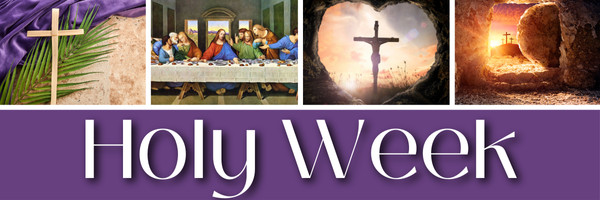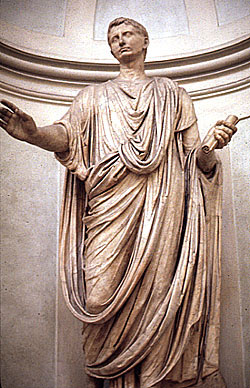We ask you, urgently: don't scroll past this
Dear readers, Catholic Online was de-platformed by Shopify for our pro-life beliefs. They shut down our Catholic Online, Catholic Online School, Prayer Candles, and Catholic Online Learning Resources essential faith tools serving over 1.4 million students and millions of families worldwide. Our founders, now in their 70's, just gave their entire life savings to protect this mission. But fewer than 2% of readers donate. If everyone gave just $5, the cost of a coffee, we could rebuild stronger and keep Catholic education free for all. Stand with us in faith. Thank you.Help Now >
Catholics for Israel on Understanding the Temple: Jerusalem in the Time of Jesus
FREE Catholic Classes
There's no better way to learn about Jesus's own spiritual life during the Lenten period, then to get to know the the Jerusalem Temple, the central seat of Judaism during Jesus's days.
Highlights
Travelujah (www.travelujah.com)
3/27/2012 (1 decade ago)
Published in Travel
Keywords: Wohl Museum, Jerusalem Travel, Holy Land travel, Israel Travel, pilgrimage
JERUSALEM, Israel (Catholic Online) - During Lent, one great way to gain new insights into Christ's life, passion, death and resurrection - and also into our own Christian liturgy - is to get to know the place that was at the center of Jesus' own spiritual life: the Temple. The Jerusalem Temple was the holy seat of the Divine Presence and the heart and soul of Judaism in Jesus' days. So it's no surprise that the Gospels present Jesus' life and ministry as revolving around the Temple:
Soon after He was born, Joseph and Mary presented Jesus in the Temple (Lk 2:27).
He taught in the Temple at age twelve (Lk 46) and then throughout his life (Mt 21:23; Mk 12:35; 14:49; Lk 19:47; 21:38; Jn 7:14; 8:2; 18:20); He also healed in the Temple (Mt 21:14).
He viewed the Temple as his "Father's House" and drove out the money changers from it out of concern for its sanctity (Mt 21:12; Mk 11:15; Lk 19:45; Jn 2:14).
Finally, Jesus said that He is Himself greater than the Temple (Mt 12:6) announcing that His own body would be a new Temple (Mt 26:61; Mk 14:58; Jn 2:19-21).
The Temple in the days of Jesus
There have been two Temples in the history of Israel: The first was built by King Solomon around 970 B.C. (cf. 1 Ki 6), and it was destroyed by the Babylonians in 586 B.C. (2 Ki 25). The Second Temple was built by Zerubbabel after the return from Babylonian Exile in 516 B.C.; it was renovated and enlarged by King Herod the Great around 19 B.C., and was destroyed by the Romans in 70 A.D.
Both Temples were built on the Temple Mount, approximately where the Muslim Dome of the Rock stands today. This is why the Western Wall is the holiest site for the Jews today - because it is the closest spot to where the Holy of Holies used to stand. There, the Divine Shekhinah rested over the Ark of the Covenant and between the Cherubim as the tangible sign of God's Presence in the midst of His people.
The Temple Institute
One really interesting way of getting acquainted with the Temple of Jesus' days is by visiting the Temple Institute in the Jewish Quarter of the Old City of Jerusalem. Situated on Misgav LaDach Street, one arrives there by walking down from the main square of the Jewish Quarter towards the Western Wall. Misgav LaDach is the last street on the left just before going down the stairs leading to the Wall.
The Temple Institute is quite small, consisting of three rooms, a bookshop and small movie screening room. The bookshop offers a number of superb books on the Temple, as well as Bible Atlases, Temple models, and more.
In the first room, the main showcase features two figures, one of the High Priest and one of a regular priest, standing next to a golden altar of incense just like the one that used to stand in the sanctuary. Incense was offered daily on this altar, rising towards heaven and symbolizing the prayers of the people rising to God. The High Priest is wearing his intricate "golden garments," consisting of ephod, breastplate, robe, tunic, turban, belt, crown, and pants).
The guide explains the role of the priests and of the altar of incense
As I walk around the room, a guide explains to a group of religious Israeli school children in Hebrew the role of the different instruments that were used in the Temple service, as well as the significance of the High Priest's garments. In other displays around the room, there are musical instruments that were played by the Levites in the Temple service, such as a lyre, harp and trumpets.
At the center of the second room is a superb model of the Herodian Temple as it would have looked in Jesus' days. In the corner stands a small stone altar of sacrifice. The walls of the room are decorated with several beautiful color paintings of the Temple in its former glory.
Model of the Second Temple
In the screening room, a short animated film explains various aspects of the Temple service and its sacrifices.
Walking down a few steps, we arrive at the third room. On the right side, there is the large bronze laver which provided water to wash the priests' hands and feet.
In the main showcase, there is the table of showbread, with golden racks made to hold twelve large loaves of bread. The twelve loaves (corresponding to the twelve tribes of Israel), that used to be constantly present on the table in the sanctuary and were replaced every Shabbat, represented the material abundance that God provides to the world. On the left and right, there are vessels for the Temple service and bottles of wine for the drink offerings.
The guide explaining the table of showbread
Absent from the museum is the beautiful golden Menorah that lighted the interior of the sanctuary and symbolized God's Wisdom and His spiritual blessing on Israel and the world. (The Menorah is on open display outside, further down on the way to the Western Wall).
Here also the walls are decorated with several beautiful scenes of both the first (Solomonic) and second (Herodian) Temples, including views of the inner sanctuary and of the High Priest offering incense in the Holy of Holies on Yom Kippur.
The Temple as Pillar of Creation
The guide asks the group of children: How far back does the Temple go? Only as far back as Solomon? What are its origins?
As a hint, he points to a picture in the back. There, we see an image of the Aqedah - of Abraham about to sacrifice His son Isaac. As he raises his knife to kill his son, Abraham has a mystical vision of the future Temple. Indeed, the Bible tells us that Abraham's offering of Isaac took place on Mount Moriah (Gen 22:2), the very place where the Temple would later be built. This means that Abraham's willingness to sacrifice his son to God was a foreshadowing of all the future sacrifices that would be later offered in the Temple.
Abraham has a vision of the Temple
But the Temple even goes further back in time. In fact, Jewish tradition situates the Temple at the beginning of the creation of the world. As some midrashic sources tell us, the Temple had been part of God's design since even before creation, and it was built on the foundation stone of the world, called in Hebrew the Even Shetiyah. This idea shows how it has always been God's desire to dwell among His people, even from the beginning of time.
For religious Jews, the furnishings, instruments and garments prepared by the Temple institute are not just artifacts of historical interest. They have been made according to the strictest requirements set out in the Torah for the purpose of being used in the future Third Temple. Indeed, religious Jews pray every day for its speedy reconstruction.
Christian Fulfillment
Christians see the Temple differently: for us, a visit to the Temple Institute is first of all a fascinating journey through time. It's a unique opportunity to discover the magnificent house of worship that used to be at the heart of Jewish life for nearly 1,000 years. But we also see the Temple fulfilled in Christ, in the Church's liturgy, and in our own lives when through faith and baptism we become "temples of the Holy Spirit" (1 Cor 6:19).
As the Epistle to the Hebrew tells us, Christ is both the sacrificial victim who atoned for our sins and our High Priest who is "seated at the right hand of the throne of the Majesty in heaven" (Heb 8:1). Now, at Mass, the priest acts in persona Christi (in the person of Christ) and offers incense on our behalf, representing our prayers rising to heaven.
The laver prefigures the priest's washing of hands at Mass before the Eucharistic prayer; it's a sign of his need for spiritual purification as he silently says "Lord, wash away my iniquity; cleanse me from my sin".
The Menorah reminds us of Jesus who is the "light of the world" (Jn 8:12), represented by the lighted candles on the altar at Mass.
The loaves of showbread also prefigure Jesus who is the "bread of life" (Jn 6:35), and the drink offerings of wine foreshadow his turning water in wine at Cana (Jn 2:9). And Christ now continues to remain present with us in a special way through His Body and Blood, given to us under the form of the Eucharistic bread and wine.
Christians who believe that Jesus' resurrected body is the New Temple, and that this New Temple of the Holy Spirit is perpetuated in the Church and in the Body of every baptized believer, cannot share the same desire of our Jewish friends to see the physical Temple building reconstructed. But we can pray with them for God to "return His Shekhinah to Zion" so that His presence and the power of his love and salvation may again come to dwell in its fullness, both in Jerusalem and in the entire world.
* * * *
Ariel Ben Ami writes regularly for Travelujah-Holy Land Tours. He was born in Canada and is currently a doctoral student at the Hebrew University of Jerusalem. He is fascinated by the Jewish roots of Christianity and enjoys writing about biblical and theological topics. He is the founder and director of Catholics for Israel, a lay apostolate dedicated to building bridges and fostering reconciliation between Israel and the Church.Please visit catholics for Israel at http://www.catholicsforisrael.com/
--- Leading Christian social network focused on travel to the Holy Land. People can learn, plan and share their Holy Land tour and travel experiences on Travelujah.
Join the Movement
When you sign up below, you don't just join an email list - you're joining an entire movement for Free world class Catholic education.

-

- Stations of the Cross
- Easter / Lent
- 5 Lenten Prayers
- Ash Wednesday
- Living Lent
- 7 Morning Prayers
- Mysteries of the Rosary
- Litany of the Bl. Virgin Mary
- Popular Saints
- Popular Prayers
- Female Saints
- Saint Feast Days by Month
- Pray the Rosary
The Way of the Cross: A Good Friday Reflection on Christ’s Final Journey
The Many Reasons Why We Call it Good Friday
“It Is Finished”: The Silence of Good Friday and the Triumph of the Cross
Daily Catholic
 Daily Readings for Saturday, April 19, 2025
Daily Readings for Saturday, April 19, 2025 St. Alphege: Saint of the Day for Saturday, April 19, 2025
St. Alphege: Saint of the Day for Saturday, April 19, 2025 Stewardship Prayer: Prayer of the Day for Saturday, April 19, 2025
Stewardship Prayer: Prayer of the Day for Saturday, April 19, 2025 Daily Readings for Friday, April 18, 2025
Daily Readings for Friday, April 18, 2025 St. Apollonius the Apologist: Saint of the Day for Friday, April 18, 2025
St. Apollonius the Apologist: Saint of the Day for Friday, April 18, 2025- Aspiration: Prayer of the Day for Friday, April 18, 2025
![]()
Copyright 2025 Catholic Online. All materials contained on this site, whether written, audible or visual are the exclusive property of Catholic Online and are protected under U.S. and International copyright laws, © Copyright 2025 Catholic Online. Any unauthorized use, without prior written consent of Catholic Online is strictly forbidden and prohibited.
Catholic Online is a Project of Your Catholic Voice Foundation, a Not-for-Profit Corporation. Your Catholic Voice Foundation has been granted a recognition of tax exemption under Section 501(c)(3) of the Internal Revenue Code. Federal Tax Identification Number: 81-0596847. Your gift is tax-deductible as allowed by law.




 Daily Readings for Saturday, April 19, 2025
Daily Readings for Saturday, April 19, 2025 St. Alphege: Saint of the Day for Saturday, April 19, 2025
St. Alphege: Saint of the Day for Saturday, April 19, 2025 Stewardship Prayer: Prayer of the Day for Saturday, April 19, 2025
Stewardship Prayer: Prayer of the Day for Saturday, April 19, 2025 St. Apollonius the Apologist: Saint of the Day for Friday, April 18, 2025
St. Apollonius the Apologist: Saint of the Day for Friday, April 18, 2025

